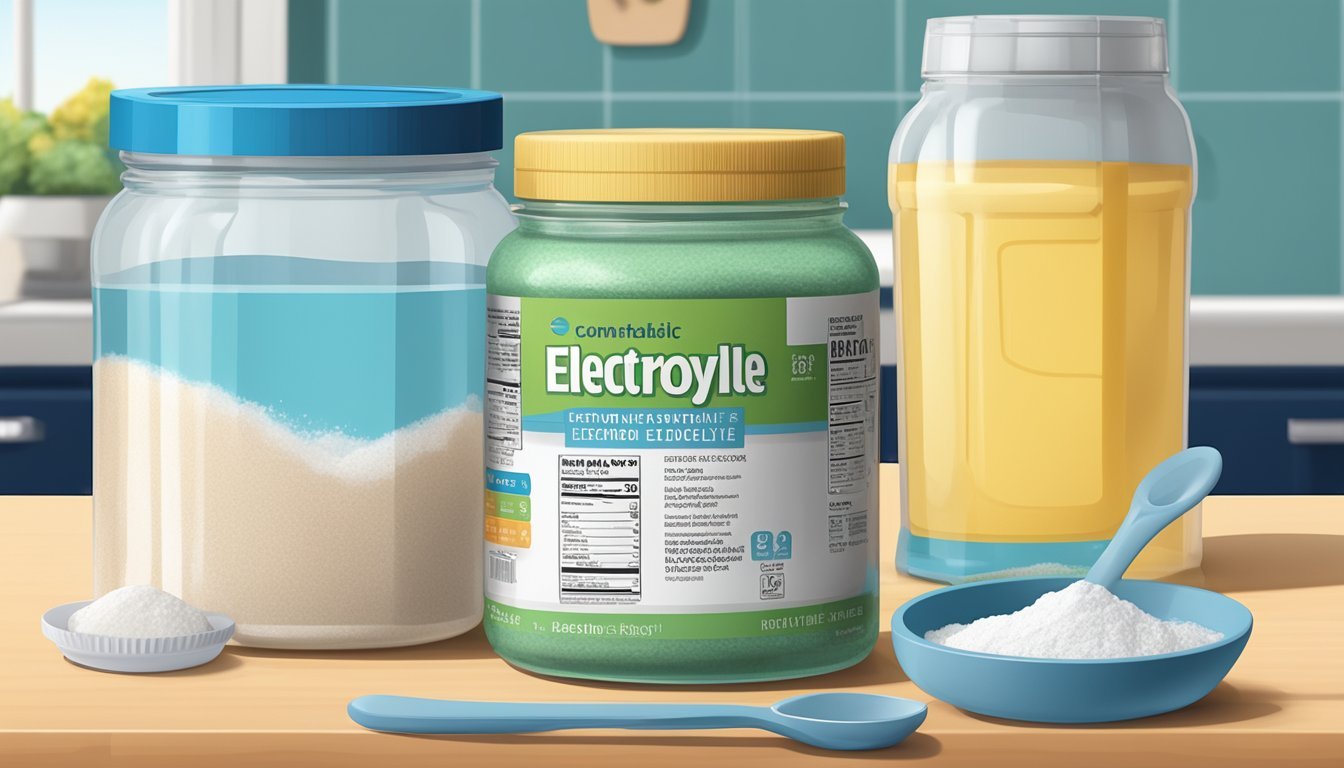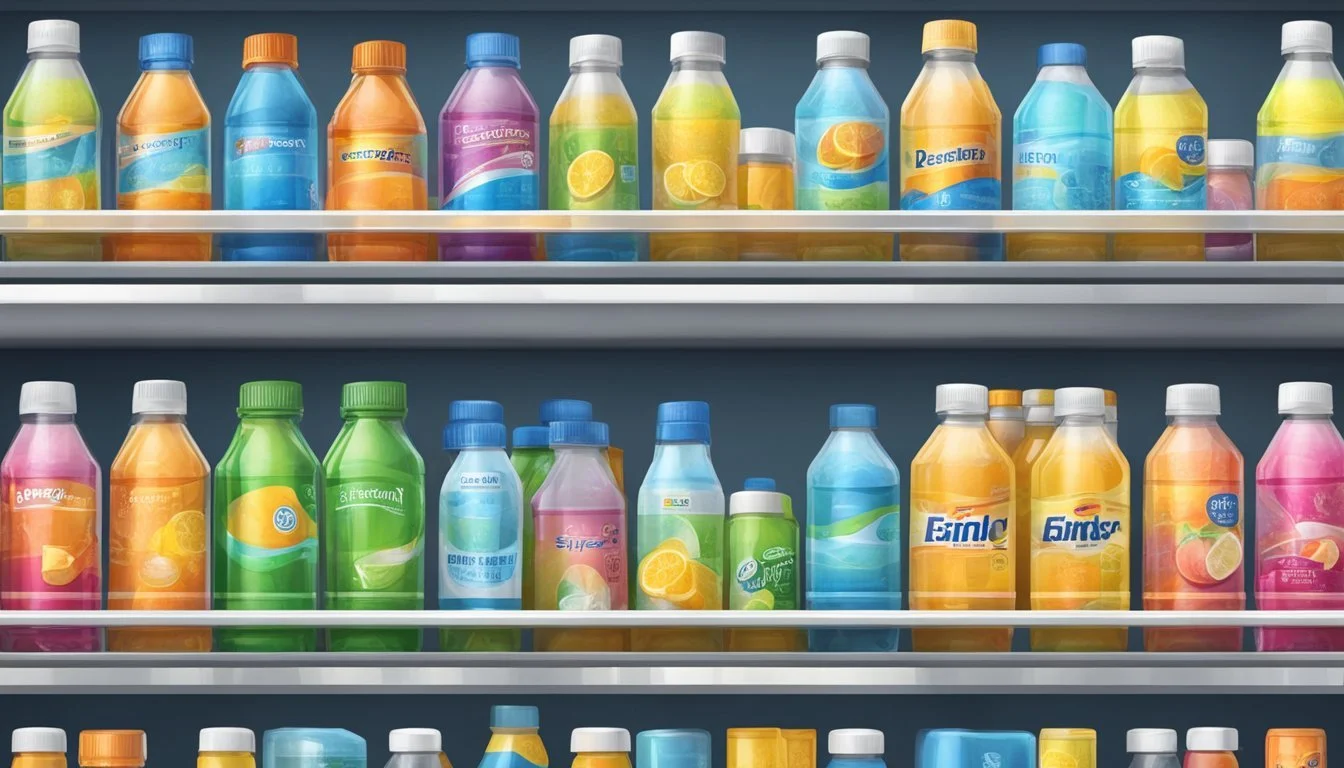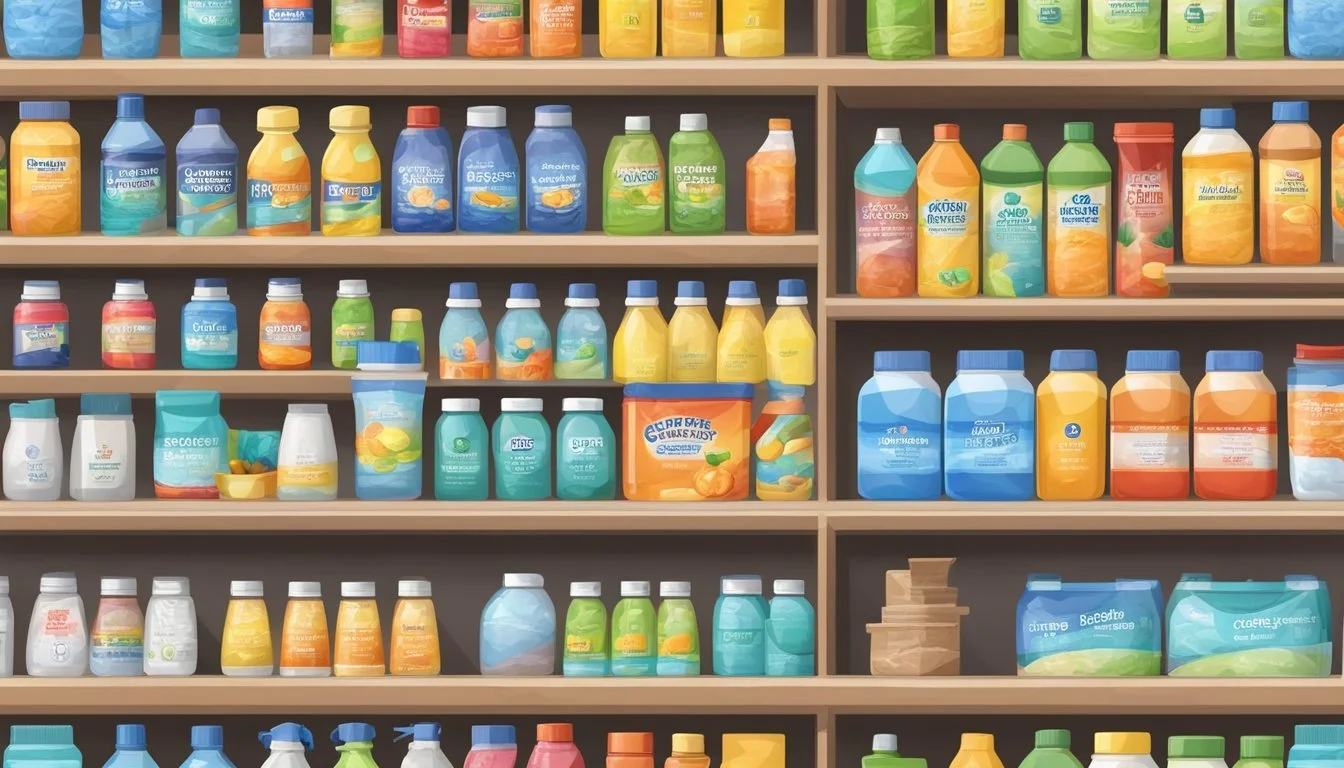How Long Do Powdered Electrolyte Drinks Last
Shelf Life and Storage Tips
Powdered electrolyte drinks have become a staple in the market for individuals seeking to maintain hydration and replenish vital minerals lost through activity or illness. These powders offer a convenient and efficient means of ensuring the body’s electrolyte levels remain balanced, particularly after intense workouts or during episodes of dehydration. The longevity of these powdered drinks, once mixed with water or another liquid, is an important consideration for consumers who rely on their efficacy for maintaining proper hydration levels over time.
shelf life of unopened electrolyte powder packets is typically long, allowing them to be stored for months or even years without significant degradation. However, once the powder is dissolved in liquid, the efficacy of the resulting electrolyte drink can diminish over time. Once the drink is opened or mixed, bacteria can enter and multiply if not consumed within a few days. To prevent the drink from becoming unsafe, it should be refrigerated after being opened or mixed and consumed within a certain number of days.
Electrolyte drinks serve the purpose of quickly replacing salts and minerals lost through sweat and exertion, and their composition is carefully formulated to adhere to this functionality. They tend to contain varying amounts of sodium, potassium, magnesium, and calcium, among other nutrients. Consumers, therefore, often look to guidance about the shelf life of their electrolyte drinks to ensure they are consuming a product that will effectively support their body’s hydration and mineral balance needs.
Components of Electrolyte Drinks
Electrolyte drinks are designed to replenish fluids and minerals lost through sweating, particularly during exercise. They typically contain a blend of minerals and other ingredients that aid hydration and physical performance. Common ingredients include sodium, potassium, magnesium, and sometimes citric acid, which is often included as a preservative to help maintain the safety and quality of the drink over time.
Role of Electrolytes
Electrolytes are minerals that carry an electric charge and are vital for many bodily functions. Electrolyte drinks are intended to replace minerals lost through sweat and support hydration. They help regulate muscle and nerve function, hydrate the body, balance blood acidity and pressure, and help rebuild damaged tissue. When a person sweats, they lose electrolytes, particularly sodium and potassium, which need to be replenished.
Types of Minerals in Electrolyte Powders
The primary minerals found in electrolyte powders include:
Sodium: Regulates fluid balance and is essential for nerve and muscle function.
: Helps to maintain normal function of cells, muscles, and nerves.
Magnesium: Involved in over 300 biochemical reactions in the body, it helps support muscle and nerve function and energy production.
Chloride: Works with sodium to help balance acids and bases in the body, which affects the fluid balance.
Calcium: Essential for bone strength, blood clotting, and muscle contraction.
Additional Ingredients
In addition to minerals, electrolyte drinks may contain other ingredients:
Carbohydrates (often as sugars): Provide energy; some drinks use different forms of carbohydrates for rapid energy.
Flavors: Natural or artificial flavors enhance taste.
Artificial Sweeteners or Stevia: Often used to add sweetness without added calories.
Nutrients: Some electrolyte powders may include vitamins or other nutrients for added benefits.
Health Benefits and Uses
Electrolyte powders serve as a reliable remedy for dehydration by replenishing vital minerals and assisting in fluid balance maintenance. People have varying electrolyte requirements depending on their activity level and health status, so these powders can be especially helpful for those with increased needs. They are particularly beneficial for athletes during intensive training and individuals with certain health conditions.
Hydration and Rehydration
Electrolyte powders are crucial for maintaining hydration, as they contain minerals like sodium and potassium which are lost through sweat. These powders aid in rehydration by restoring electrolyte balance quickly, which is essential after activities that cause excessive fluid loss, such as intense exercise, vomiting, or diarrhea
Sports Performance and Recovery
Athletes often consume electrolyte powders to sustain peak physical performance. During prolonged sports activities, the body loses electrolytes through sweat, which can affect muscle functions. Electrolyte powders help replenish these lost minerals, support recovery, and can reduce the occurrence of cramps, thereby promoting a swift return to peak athletic condition.
Health Conditions and Daily Diet
For individuals experiencing health conditions that result in electrolyte imbalance, such as gastrointestinal issues leading to vomiting and diarrhea, electrolyte powders can be life-saving by restoring fluid balance. Including electrolyte powders in the daily diet also supports overall health by preventing the symptoms of under- or over-hydration, though it's important to note that for the average healthy person, a well-balanced diet typically provides the necessary electrolytes without additional supplementation.
Shelf Life and Storage
Understanding the shelf life and storage of powdered electrolyte drinks is essential for maintaining their quality and effectiveness. Important information such as expiration dates, lot number, and production dates is provided on the packaging, which may be a box, bottle, or packet. These drinks have a certain lifespan during which they are expected to perform at their best, and proper storage—by following the manufacturer's instructions—can extend their usable duration.
Factors Affecting Shelf Life
The shelf life of powdered electrolyte drinks is influenced by several factors, including their ingredients and the presence of preservatives. One key reason shelf life is limited is that ingredient degradation and the potential for microbial growth can affect the product's safety and effectiveness over time. An unopened package of powdered electrolyte mix typically retains optimal quality for up to 3 years. Beyond this period, the product may not necessarily spoil, but it could begin to degrade in terms of texturecolorflavor
Proper Storage Conditions
To maximize shelf life, powdered electrolyte drinks should be stored in the following conditions:
Dry: Humidity can cause clumping and spoilage.
Cool: High temperatures can degrade the quality.
Dark: Direct light can alter the composition of the drink mix
Storing the product in an airtight container after opening can further preserve its quality. In contrast, improper storage can greatly reduce the product life.
As a general rule, follow the manufacturer's recommendations for how long to keep the product after opening to ensure safety and effectiveness.
Expiration and Quality Indicators
While a powdered electrolyte drink may be safe to consume after the expiration date, it is essential to check for signs that the product has deteriorated:
Clumping: Indicates moisture intrusion.
Discoloration: May suggest degradation.
Off smell: Can signal spoilage or contamination.
If an expired product shows any of these signs of spoilage, it should be discarded.
It is generally advisable to adhere to the expiration date for the best experience in terms of quality and taste.
Potential Risks and Considerations
When considering powdered electrolyte drinks, one must be aware of the potential risks and safety considerations, including the possibility of electrolyte imbalance, interactions with certain medications, and the essential practice of consulting healthcare providers. Microbes can enter the product if it is not stored properly or left open for extended periods, which may lead to potential health risks. However, most people do not need to worry excessively about consuming electrolyte powders slightly past their expiration date if there are no signs of spoilage.
Electrolyte Imbalance and Side Effects
Electrolyte drinks, while beneficial for hydration, can lead to electrolyte imbalance if not consumed in moderation. An excess of electrolytes may cause hyperkalemia, a condition characterized by high potassium levels that can lead to nausea, weakness, or even heart problems. Side effects are generally minimal, but they can occur and may include symptoms such as nausea, dizziness, and headaches
Interactions with Medications
It's important to consider that electrolyte powders can interact with medications. These interactions can alter the effectiveness of prescription drugs or worsen side effects. For example, heart medications and some blood pressure drugs can be affected by changes in electrolyte levels. Documentation of current medications should always be kept at hand when discussing dietary supplements with a healthcare provider.
Consulting Healthcare Providers
Before incorporating electrolyte powders into one's routine, it is crucial to consult with a healthcare provider. They can advise on the appropriate dosage and usage considering one's health history and current medical conditions. This step is especially important for individuals managing chronic diseases or those on multiple medications, to ensure safe integration with their treatment plans.
Comparisons and Alternatives
In evaluating alternatives to powdered electrolyte drinks, one should consider their efficacy in rehydration, the presence of electrolytes, and their suitability for various hydration needs. Like many other things such as juices and canned foods, electrolyte powders are often safe past their expiration date if stored properly.
Other Hydration Options
When considering hydration, plain water is often sufficient for low to moderate activity, but it may lack the necessary electrolytes for quick replenishment after intense exercise. Alternatives like coconut water and watermelon are rich in potassium and other minerals, making them natural rehydrating options post-workout. Compared to Gatorade, powdered electrolyte drinks generally have a longer shelf life and are easier to store, making them a convenient alternative. Tea can be hydrating, but it may contain caffeine, which is diuretic. It’s essential to balance caffeine intake with additional water consumption if one chooses tea for hydration.
Natural Sources of Electrolytes
Foods like bananasspinach are packed with essential electrolytes like potassium, magnesium, and sodium. These natural sources can complement a diet and support hydration. However, one would need to consume a considerable amount of these foods to match the electrolyte concentration found in specialized drinks or powders.
Comparing Electrolyte Powders to Sports Drinks
Electrolyte powders typically offer a more concentrated and customizable electrolyte profile compared to traditional sports drinks. Sports drinks might contain added sugars and calories, which may not be desirable for all users. Electrolyte tablets are a convenient alternative to powders and can be added to water to create a similar drink. It's crucial to compare the amounts of electrolytes, sugars, and other ingredients in these products to ensure they meet one's individual hydration needs.
Consumer Guidance
In selecting and using powdered electrolyte drinks, consumers must consider factors like composition, appropriate usage, and understanding the labeling. It is important to understand expiration dates and storage guidelines to ensure safe use and maintain product quality. Registered dietitians often recommend scrutinizing product labels for efficacy and safety.
Choosing the Right Electrolyte Powder
One should assess their specific needs such as exercise intensity or dietary restrictions before selecting an electrolyte powder. Registered dietitians suggest looking for products with a balance of essential electrolytes including sodium, potassium, calcium, and magnesium. It's important to consider:
Intensity of Workout: High-intensity workouts may require a drink with more sodium to compensate for increased sweating.
Dietary Restrictions: Choose powders that accommodate dietary needs, such as sugar-free or natural ingredient options.
How to Use Electrolyte Powders Effectively
To maximize the benefits, consumers should follow the recommended usage on the packaging. Here are the key steps:
Mix Accurately: Use the correct amount of powder as indicated by the label to ensure the proper concentration.
Timing: Drinking an electrolyte solution pre, during, or post-exercise can help maintain fluid balance.
Hydration needs can vary based on activity level and environmental conditions, thus adjusting intake as necessary can be beneficial.
Understanding Labels and Ingredients
Careful examination of product labels allows consumers to avoid unwanted ingredients and allergens. Look out for:
Nutritional Content: Verify quantities of key electrolytes and vitamins.
Added Substances: Be mindful of added sugars, artificial colors, and preservatives.
Expiration Dates: Check for clear expiration dates, such as "April 2023" or "June 2024," to ensure product freshness.
Consumers should aim to purchase powders that transparently list all ingredients and their quantities.
Market Insights
The electrolyte powder market is evolving, driven by consumer trends and product innovation. Manufacturers are responding to a growing demand for hydration options that support an active lifestyle.
Trends in Electrolyte Powder Consumption
Consumption patterns indicate a steady increase in the preference for electrolyte powder drinks. Factors influencing this trend include the convenience of storage and transportation, a rising awareness of hydration's health benefits, and a surge in fitness activities among Millennials and Generation Z. The market analysis suggests that these demographic cohorts are more inclined towards physical well-being and are, therefore, significant contributors to the current market growth.
Electrolyte Powder Product Variations
Product offerings have diversified, with manufacturers now providing electrolyte powders in various flavors and formulations to cater to a wide range of consumer preferences. For instance, some powders are designed for rapid absorption, while others contain additional vitamins and minerals to support overall health. The packaging has also become a point of differentiation, as brands strive to offer user-friendly designs that are easy to open, carry, and recycle. This level of product variation reflects manufacturers' adaptability to the nuanced needs of their customer bases.
Future Outlook
Interestingly, recent analyses reveal a surge in demand for natural and sugar-free formulations, signaling a shift in consumer preferences within the electrolyte powder market.
The electrolyte powder market is anticipated to expand, with projections suggesting considerable growth by 2029. The compound annual growth rate (CAGR) for the market is expected to stay positive, indicative of a robust consumer base and a consistently growing demand. Factors such as product innovation, improved distribution channels, and an expanding fitness culture will likely contribute to this upward trajectory. Companies are expected to continue enhancing their product lines to accommodate consumer demand for healthier and more convenient electrolyte replenishment solutions.
Frequently Asked Questions
When dealing with powdered electrolyte drinks, understanding shelf life, quality indicators, and the potential effects of consuming expired products ensures safe and effective hydration.
For further information about expiration dates or product safety, contact the manufacturer or customer service.
Can Electrolyte Powders Go Bad?
Expiration: Yes, electrolyte powders can go bad
Shelf Life: Typically, an unopened electrolyte powder has a shelf life of about two years from the date of manufacture. The exact production day is often indicated on the packaging, which can help you determine the product's freshness and how long it will remain safe to use. However, this can vary by brand and ingredients.
Storage: Proper storage is crucial. Electrolyte powders should be kept in a cool, dry place to prevent degradation.
What Are the Symptoms of Consuming Expired Electrolyte Powders?
Symptoms: Consuming expired electrolyte powders can lead to ineffectiveness or, in some cases, mild to severe health symptoms.
Mild Symptoms: These may include gastrointestinal discomfort such as nausea or vomiting.
Severe Symptoms: More serious symptoms, although rare, could occur due to the breakdown of ingredients or potential contamination and might require medical attention.
How to Identify Authentic and High-Quality Electrolyte Powders?
Authenticity and Quality: Identifying authentic and high-quality electrolyte powders is key to ensuring effectiveness and safety.
Labeling: Authentic products should have clear labeling with an ingredient list, batch number, expiration date, and certification logos. As a rule of thumb, always check for intact packaging and legible labels to help ensure product quality.
Brand Reputation: Reputable brands often provide third-party testing results and have consistent positive consumer reviews.
Appearance and Consistency: High-quality powders usually have a uniform color and texture, without clumps or discoloration that could indicate compromised integrity.










